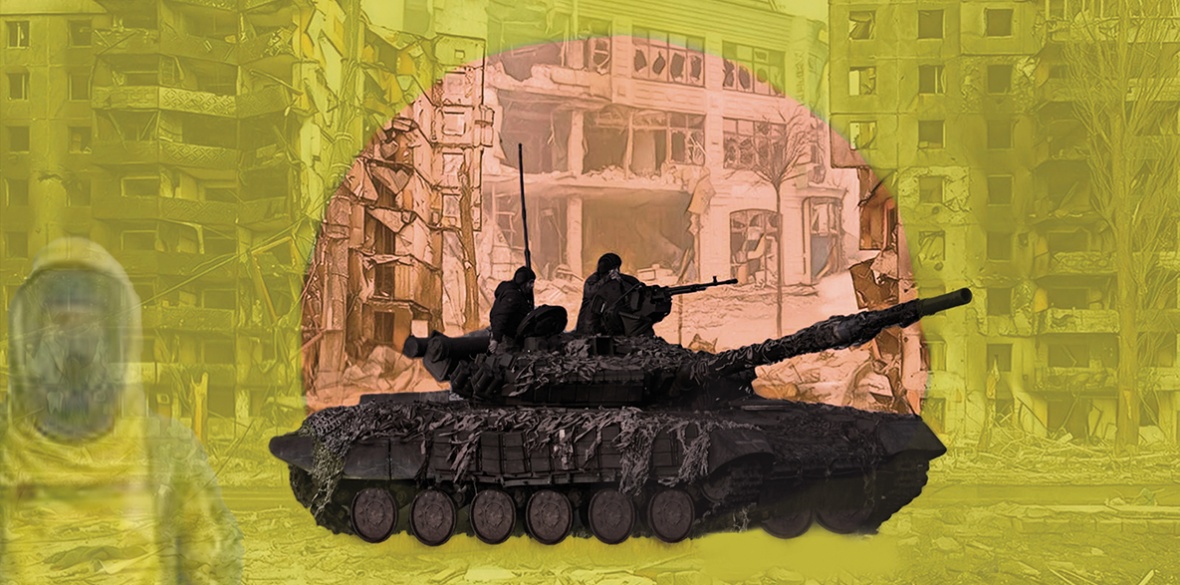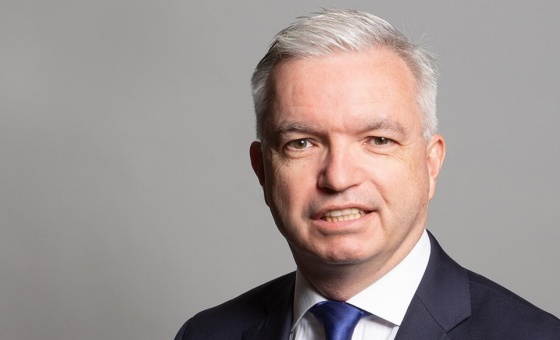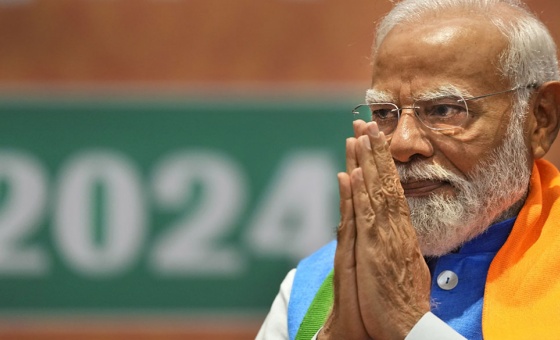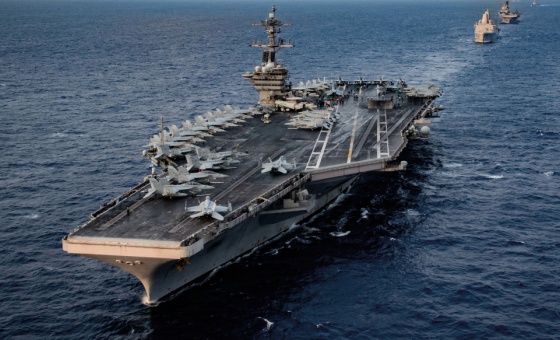This is the last article you can read this month
You can read more article this month
You can read more articles this month
Sorry your limit is up for this month
Reset on:
Please help support the Morning Star by subscribing here
THE war in Ukraine is the most devastating conflict in Europe since World War II. As in most conflicts, and in the years leading up to the war, truth became the first causality.
The Western media simplifies the narrative to Nato good — Russia bad, while ignoring pivotal factors such as Nato’s eastward march towards Russia and the US-backed 2014 coup, which in turn set the scene for the war that unfolded in Feb 2022.
Non-mainstream media or independent bloggers who try to peer over the media iron curtain and question Nato talking points face being defamed as pro-Kremlin stooges.
Is the West scared of its citizens thinking independently or fearful that such “wrong think” might outshine pro-Nato propaganda? Do Europe’s citizens need “protection” from the risk of being exposed to unsanctioned thinking lest they draw different conclusions to the official narrative?
A year into the conflict and amidst the dreadful loss of life on all sides, it looks like war between Russia and Ukraine is really a conflict between Nato and Russia, in which the former seeks to challenge the emergence of a new Eurasian-centric capitalist bloc. Remember too that Russia is China’s ally and a defeat of the former would leave the latter in a more vulnerable position vis a vis Nato expansion.
It is clear too that (most of) the nations comprising the EU and Nato are willing to pull out all stops to defeat or greatly weaken Russia, regardless of the human costs to Ukraine, and have already handed over billions of dollars in military aid alongside vast quantities of weapons from their own arsenals. Britain provided £2.3 billion in military aid to Ukraine in 2022 whilst the US has given at least $46.6bn in military aid since the war began.
For the US, at least, this is a perfect war in which it can fight a key geopolitical opponent without getting its hands dirty and having to explain an influx of body bags to the US public like in Iraq and Afghanistan.
In the EU’s case however, reality hits a little close to home — despite its massive support for Ukraine and the 10 rounds of sanctions placed upon Russia, they have failed to bring the country to its knees in economic or military terms (as repeatedly promised), nor have they “inspired” the Russian people to overthrow their rulers. Instead, the anti-Russian sanctions seem to have caused a fair amount of self-harm to the EU whilst Russia is well on the way to finding new markets for its exports.
Hypocritically, despite singing from the pro-Ukraine hymn book, the EU continues to import billions of dollars worth of goods from Russia — $195.56 billion during 2022 and the greatest amount since 2014. Furthermore, despite the EU banning Russian crude oil imports, it purchases oil products from India (eg diesel and jet fuel) that have been refined from Russian crude oil. As Russia is now selling more crude oil to India and India in turn is selling more refined oil to Europe, this is a win-win situation for these two Brics nations.
In an unwise and unneeded escalation to the war in Ukraine, the British government announced in late April 2023 that it had sent Challenger 2 tank shells tipped with depleted uranium (DU) to Ukrainian forces. Such a move is a provocative and dangerous escalation that risks precipitating a regional or global war in which there will be no winner.
It is worth pointing out that at the end of March 2023, James Heappey, British Minister of State for the Armed Forces, responded to a parliamentary question about whether Russia had used DU munitions in Ukraine with the answer: “The Ministry of Defence is unaware of any credible open-source reports of Russia using depleted uranium in Ukraine.”
DU is a by-product of a process whereby uranium is enriched to make nuclear fuel. It remains radioactive, albeit 40 per cent less so than raw uranium. On account of its high density, DU is used to increase the power of armour-piercing munitions and has previously been used by US/Nato forces in several conflicts — the 1991 first Gulf war, Bosnia, the 2003 Iraq invasion, and against Isis forces in Syria in 2015.
The jury is out on whether DU poses health risks. Research reportedly funded by the US government denied that DU munitions used in Iraq posed a risk to the population’s health. However, other studies maintain that DU usage led to higher rates of cancer and birth defects.
The topic remains a contested issue. A 2021 systematic review published in the BMJ Global Health, reportedly the first such review on the topic, found that: “The available evidence suggests possible associations between exposure to depleted uranium and adverse health outcomes among the Iraqi population.”
The Scientific Committee on Health and Environmental Risks formed by the European Commission produced a report in 2010 which noted that “in combat zones, vehicles hit by DU should be made inaccessible to the general public and be properly disposed of. Used DU ammunition should also be collected and disposed of.”
This concurs with advice published by the US Air Force in 1975 which stated that DU ought to only be used against armoured vehicles. However, in Iraq, DU munitions reportedly were not only used against human combatants but also fired in or near to urban areas.
Consequently, hundreds of sites in Iraq were contaminated with DU. Similar consequences are possible in the case of Ukraine: funding a clean-up operation once the war ends is unlikely to be a top priority.
The US Environmental Protection Agency notes that with regards to DU “exposure to the outside of the body is not considered a serious hazard. However, if DU is ingested or inhaled, it is a serious health hazard.”
The risk that DU finds its way into the food chain ought not to be dismissed, alongside the long-term detrimental effects on the ecosystem.
Furthermore, introducing DU (radioactive) munitions into a high-stakes war such as the one in Ukraine breaks a certain psychological barrier whereby the risk of further escalation increases as we take another step down an ever-shortening and dangerous path that ends with the use of conventional uranium weapons — nukes.
Continuing to arm Ukraine so that it can fight Russia down to the last Ukrainian on behalf of Nato (and perhaps after that using Poles to do the job) sets the scene for the conflict to become a regional war or worse.
Realistically, the war is not going the way Nato hoped and promised. The Russian economy has not collapsed, Russia has not run out of missiles, the Russian people have not overthrown their government, and the majority of the world has not turned its back on Russia, which is in the process of securing new trading partners and even sympathisers to offset the effects of any Western sanctions.
The conflict has also shown that the world (including major players such as China, India, Brazil, and Saudi Arabia) is not united behind the West. Indeed, 19 more countries are now seeking to join the Brics group of emerging economies. It would be easy, even convenient, for the US to pull back on funding Ukraine should the upcoming Ukrainian offensive not deliver the promised gains.
After all, 2024 is an election year, a greater number of US politicians are becoming uneasy at Biden’s blank cheque to Ukraine, and frankly sending billions to fund a war abroad rather than investing the money at home is not exactly a vote winner.
It would be tempting for the US to say “mission accomplished” and make the war in Ukraine Europe’s problem, leaving the EU to sort out the mess and come to a disadvantageous settlement with Russia.
It is critical that the anti-war movement, the trade union movement, and more broadly the left work with peace movements within Ukraine, Russia and beyond to call for a swift and just settlement to the war, in which the grievances of all sides are acknowledged.
Concurrently we must condemn rhetoric or action by any world leader that seeks to prolong the war in Ukraine whilst the people of Russia, Ukraine and Europe bear the human and economic cost of the conflict.
We need to be wary too, of forces both within Nato and beyond that are seeking to prolong the conflict in Ukraine for ideological reasons, due to the lucrative nature of war (not least for the arms industry), or for personal ambition.











